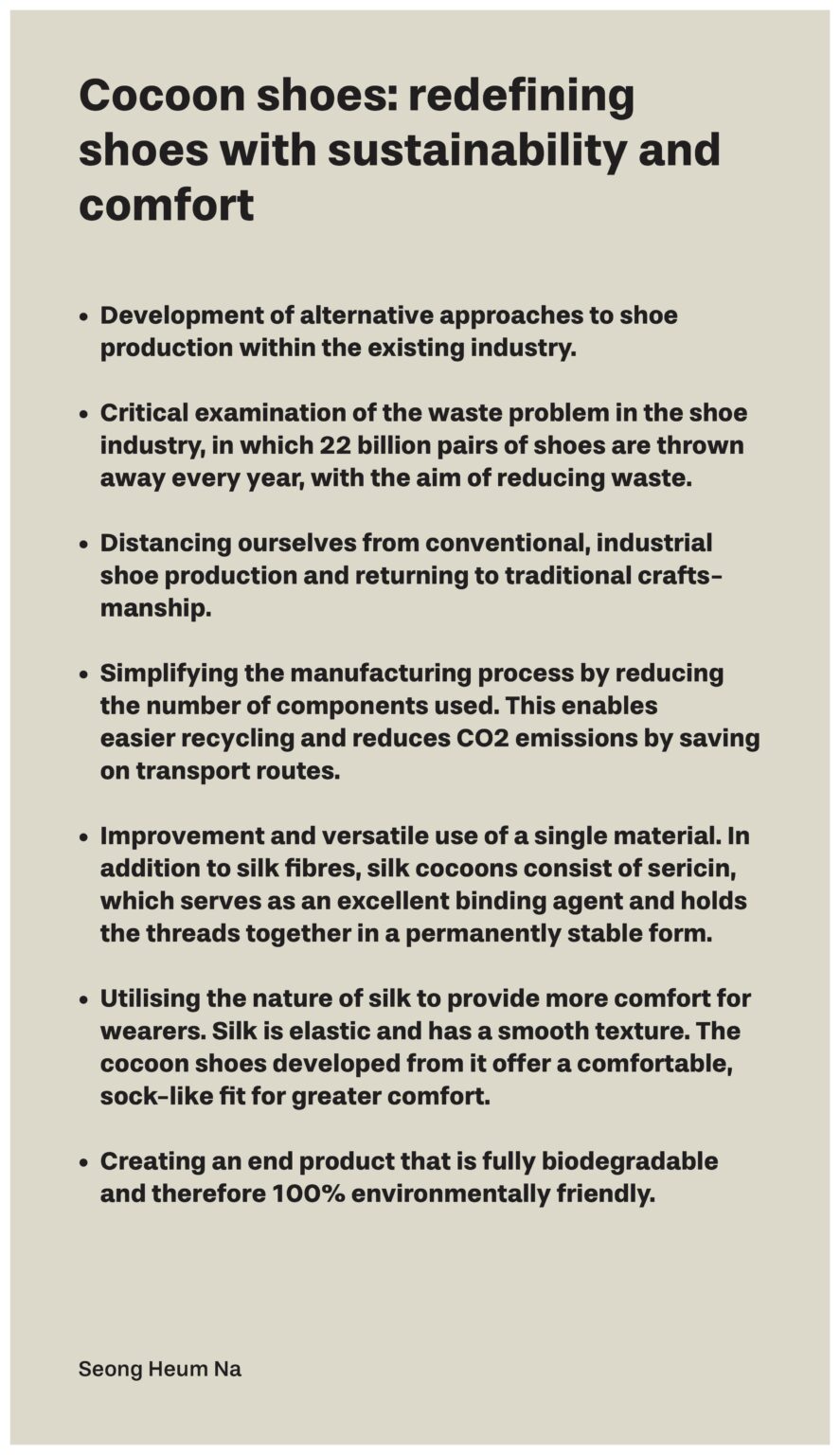Cocoon Shoes
rethinking a traditional material
Cocoon Shoes are made from silk cocoons using a simple technique – an innovative and environmentally friendly production method that moulds the cocoons into the desired shape without the need for silkworms to die. The cocoons of the hatched silk moths are boiled in clean water for about half an hour to soften the sericin, the natural ‘glue’ of the cocoons. This causes the silk fibres to separate and the silk can be stretched over a last to form the upper material of the shoe, which is robust, flexible and biologically degradable.
| student: | Seong Heum Na |
| project: | The Insect Project – Resilience Part I |
| year: | 2023/24 |
The shoes made from cocoons have a comfortable fit. Silk consists of protein fibres, has good biocompatibility with the human body and a smooth surface. The coefficient of friction with the human body is the lowest of all fibre types. Silk also has excellent hygroscopicity and releases moisture. At room temperature, it helps the skin to retain a certain amount of moisture without drying it out too much. When worn in summer, sweat and heat are quickly wicked away from the body, leaving the skin feeling cool. What’s more, it not only has excellent heat dissipation, but also an excellent insulating effect.
Unlike the big brand sneakers, Cocoon shoes are made from a single material and are 100 per cent biodegradable when thrown away.
Cocoon shoes are mainly made from silk cocoons using an environmentally friendly method. The water used to make this product can be reused to reproduce another object to extract sericin or disposed of without harming the environment.
Silk is obtained from the cocoons of larvae. In conventional silk production, the reared insects do not survive the pupal stage as they are boiled alive in their cocoons. If the moths are allowed to hatch, they nibble a hole in the cocoon and in doing so cut up the silk thread, which is actually endless. For every pound of silk, at least 2,500 silkworms are usually killed.
The process developed in the Cocoon Shoe project makes it possible to use cocoons from hatched silkworms.
Despite all these advantages of silk, there are also disadvantages. Like other proteins, it has the disadvantage that the fabric turns yellow in direct sunlight and is particularly susceptible to sweat stains.

